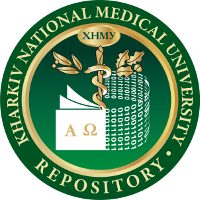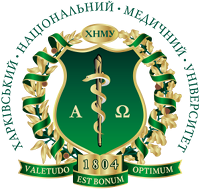Please use this identifier to cite or link to this item:
http://repo.knmu.edu.ua/handle/123456789/13973Full metadata record
| DC Field | Value | Language |
|---|---|---|
| dc.contributor.author | Гурина, Татьяна Михайловна | - |
| dc.contributor.author | Пахомов, Александр Витальевич | - |
| dc.contributor.author | Полякова, Анна Леонидовна | - |
| dc.contributor.author | Легач, Евгений Иванович | - |
| dc.contributor.author | Божок, Галина Анатольевна | - |
| dc.contributor.author | Gurina, T. | - |
| dc.contributor.author | Polyakova, A. | - |
| dc.contributor.author | Bozhok, G. | - |
| dc.contributor.author | Legach, E. | - |
| dc.date.accessioned | 2016-10-18T09:00:32Z | - |
| dc.date.available | 2016-10-18T09:00:32Z | - |
| dc.date.issued | 2016 | - |
| dc.identifier.citation | The development of the cell cryopreservation protocol with controlled rate thawing / T. M. Gurina, A. L. Polyakova, E. I. Legach, G. A. Bozhok // Cell Tissue Bank. – 2016. – Vol. 17, № 2. – Р. 303–316. | ru_RU |
| dc.identifier.issn | 1389-9333 | - |
| dc.identifier.uri | https://repo.knmu.edu.ua/handle/123456789/13973 | - |
| dc.description.abstract | Thawing in the water bath is often considered as a standard procedure. The thermal history of samples thawed in this way is poorly controlled, but cryopreservation and banking of cell-based products require standardization, automation and safety of all the technological stages including thawing. The programmable freezers allow implementation of the controlled cooling as well as the controlled thawing. As the cell damage occurs during the phase transformation that takes place in the cryoprotectant medium in the process of freezing–thawing, the choice of warming rates within the temperature intervals of transformations is very important. The goal of the study was to investigate the influence of warming rates within the intervals of the phase ransformations in the DMSO-based cryoprotectant medium on the cell recovery and to develop a cryopreservation protocol with controlled cooling and warming rates. The temperature intervals of phase transformations such as melting of the eutectic mixture of the cryoprotectant solution (MEMCS), melting of the eutectic salt solution (MESS), melting of the main ice mass (MMIM), recrystallization before MEMCS, recrystallization before MESS and recrystallization before MMIM were determined by thermo-mechanical analysis. The biological experiments were performed on the rat testicular interstitial cells (TIC). The highest levels of the cell recovery and metabolic activity after cryopreservation were obtained using the protocol with the high (20 C/min) warming rate in the temperature intervals of crystallization of the eutectics as well as recrystallizations and the low (1 C/min) warming rate in the temperature intervals of melting of the eutectics as well as MMIM. The total cell recovery was 65.3 ± 2.1 %, the recovery of the 3-beta-HSDpositive (Leydig) cells was 82.9 ± 1.8 %, the MTT staining was 32.5 ± 0.9 % versus 42.1 ± 1.7 %; 57.4 ± 2.1 % and 24.0 ± 1.1 % respectively, when compared to the thawing in the water bath. | ru_RU |
| dc.language.iso | en | ru_RU |
| dc.publisher | springer | ru_RU |
| dc.subject | cryopreservation | ru_RU |
| dc.subject | DMSO | ru_RU |
| dc.subject | cryopreservation | ru_RU |
| dc.subject | temperature interval of phase transformation | ru_RU |
| dc.subject | cell recovery | ru_RU |
| dc.title | The development of the cell cryopreservation protocol with controlled rate thawing | ru_RU |
| dc.type | Article | ru_RU |
| Appears in Collections: | Наукові праці. Кафедра біологічної хімії | |
Files in This Item:
| File | Description | Size | Format | |
|---|---|---|---|---|
| Пахомов_1.pdf | 513,1 kB | Adobe PDF |  View/Open |
Items in DSpace are protected by copyright, with all rights reserved, unless otherwise indicated.

